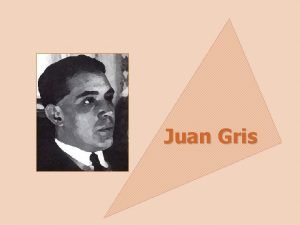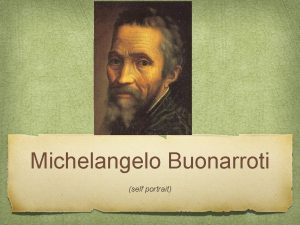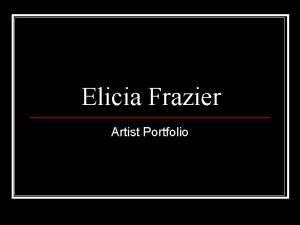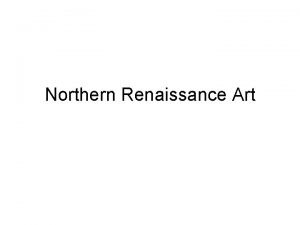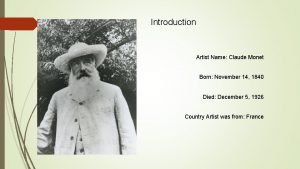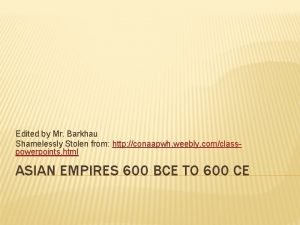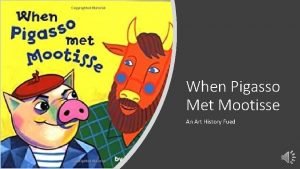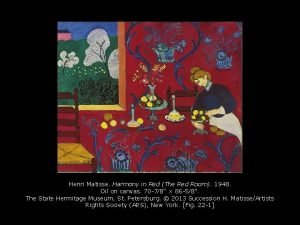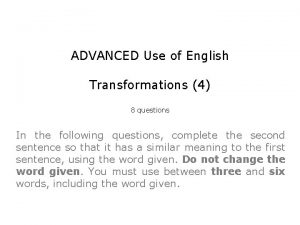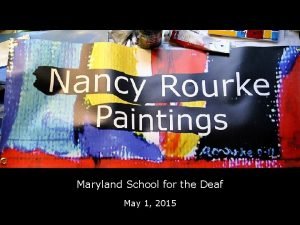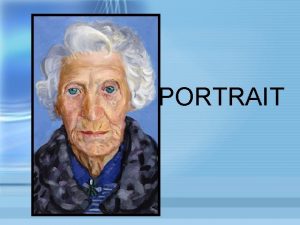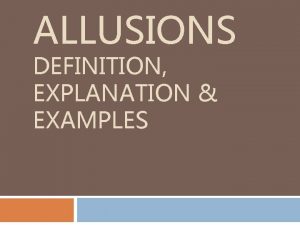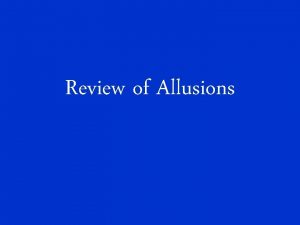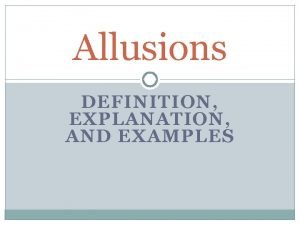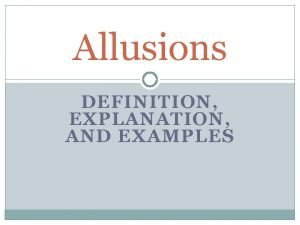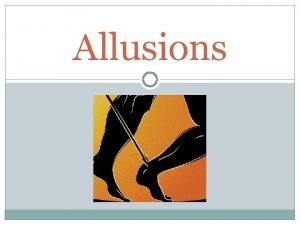Allusions in The Portrait of the Artist as









- Slides: 9

Allusions in The Portrait of the Artist as a Young Man by James Joyce Omobolade Teriba, Stella Tse, Jessica Radoncic, and Grace Wolf

Mini-Lesson: Allusion Aim: What are allusions and how does James Joyce employ them in his novel to enhance the story? Do Now: List some allusions you know of in literature (other than those in Portrait of the Artist).

Mini-Lesson: Allusion • • Allusion is defined as: "An implied or indirect reference, especially in literature" (Merriam. Webster dictionary) "An allusion is a reference made in a literary text to another text, or to a myth, historical or contemporary event, person, place, artwork, or element of popular culture" (AP) Allusions are generally used to provide further meaning to a text or story, by using an idea that most readers will already be familiar with. Many popular illusions in literature refer back to the Judeo-Christian Bible or classical mythology of the Greeks and Romans.

Mythological Allusions In Joyce's novel, the most prominent mythological allusion is that of Daedalus and Icarus. Stephen's last name, for instance, which is Dedalus, is a clear reference to Daedalus of the myth. By using the name Dedalus in the novel, Joyce creates a link between birds and artistry throughout the book. He repeatedly uses bird imagery to illustrate Stephen's artistic growth throughout the novel.

Mythological Allusions (cont'd) The novel starts off with the birds close to the ground, like Icarus spiraling toward the sea. -This is shown when Stephen states that he is going to marry Eileen someday. In response to what Stephen says, Dante replied: "–O, Stephen will apologize. –O, if not, the eagles will come and pull out his eyes. –" By hiding under the table, Joyce refers to the fall of Icarus. By using this reference, Joyce is able to show readers Stephen's artistic

Mythological Allusions (cont'd) When Stephen decides his future destiny to be an artist, we see a change in Stephen. “His heart trembled; his breath came faster and a wild spirit passed over his limbs as though he were soaring sunward” This feeling indicates that Stephen's change. He is now flying up and in the position of Icarus. This change illustrates that Stephen is more mature artistically.

Biblical Allusions • Stephen’s name is an allusion to St. Stephen, the first Christian martyr. Like St. Stephen, Stephen Dedalus has conflicts with the established religion of his day. o St. Stephen was one of the seven deacons appointed by the apostles. o Accused of blasphemy, at his trial he gave a long speech in which he challenged religious beliefs, and denounced the Jewish authorities who were sitting in judgment on him and was stoned to death. • Many mentions of the Virgin Mary, and quotes from Catholic Mass.

Literary Allusions • Stephen’s use of the name “Dante” for his aunt (Mrs. Riordan) because of the way “The Auntie” sounds in her Cork accent alludes to The Divine Comedy by Dante Alighieri. o o • • In Chapter 3, Father Arnall’s sermon about hell, which leads to a turning point in Stephen’s life, draws heavily from Dante Alighieri’s poem Inferno, which tells the story of Dante’s descent into hell. Just as Dante's despair is eased by the appearance of the Virgin Mary summoning him upward to heavenly union with his beloved Beatrice, Stephen receives a vision of Mary placing her hand on his beloved Emma. Stephen makes direct allusions to the doctrines of Catholic theologian St. Thomas Aquinas. Stephen paraphrases Aquinas’ definition of beauty as “ad pulchritudinem tria requiruntur: integritas , consonantia, claritas, ” which he then translates as “Three things are needed for beauty: wholeness, harmony and radiance. ” (Chapter 5, pg. 229) The epigraph “Et ignotas animum dimittit in artes” (And he sets his mind to unknown arts) from Ovid's Metamorphoses alludes to the myth of Daedalus.

Discussion Questions 1. Considering the difference between Daedalus and Icarus, why do you think it is that Stephen identifies himself as Icarus? 2. Stephen's identifying himself as Icarus says what about his character? 3. Had Stephen connected more with Daedalus, how would Stephen's perceived character influence the novel as a whole?
